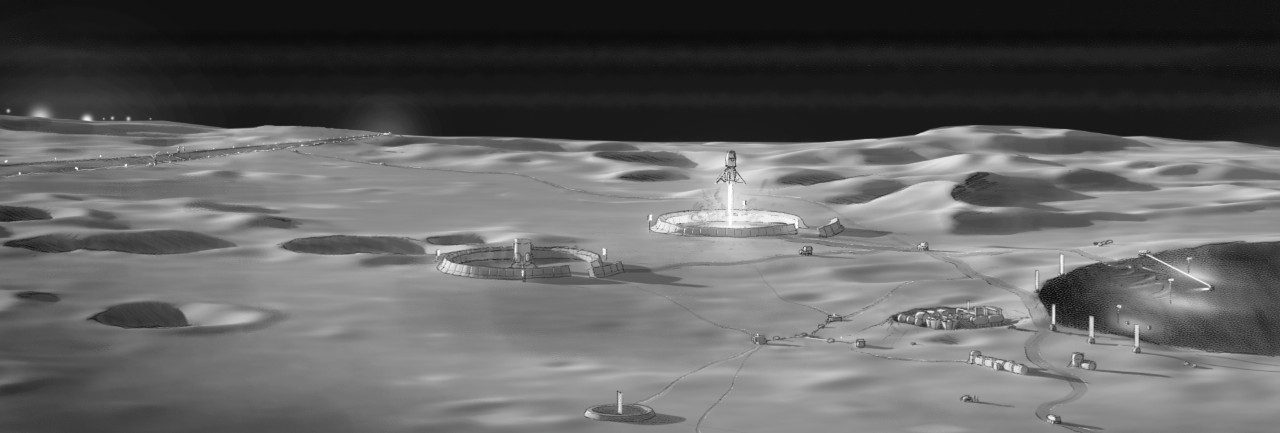By the 2040s, the Moon buzzes with international research and commercial infrastructure, transforming its barren surface into a livable ecosystem.
At the heart of this community is the Artemis Base Camp at the lunar south pole, equipped with landing pads, refueling stations, habitats and resource facilities. The Moon's water-ice is a game-changer, providing water, air, radiation shielding and propellants for space travel.
This infrastructure is vital for lunar sustainability and as a launchpad for Mars missions. Utilizing lunar resources reduces dependency on Earth, making space exploration more sustainable and cost-effective, which is fundamental for long-term missions and interplanetary travel.
The Moon stands as a beacon of human potential and innovation when we set our sights beyond our Earthly cradle.
Dive into our vision of a water-based lunar architecture on the Moon that demonstrates our commitment to sustainable space exploration. This journey to the Moon is not just for knowledge but securing our future, enabling Mars exploration, permanent bases and returning valuable resources to Earth.

"NASA has established a credible, well constructed Moon to Mars architecture. Through international agreements like the Artemis Accords, space agencies and commercial companies around the world are working on projects supporting this architecture, from the Orion crew vehicle and EVA suits to lunar landers and surface habitats."




